QuestionQUESTION: Hello there,
I have a question!
My Concern: Neither of my tortoises are eating very much... Nor are they active in the least...
Specifics:
Age: 2008 Hatchlings, I am assuming 6 months or less, they are about the size of a Clementine orange.
Heat: 88 degrees in the basking spot, under-tank heater on low at night. The temp at "lights out" will not go below 75 degrees.
Hide Box: Yes
Water: Very shallow and EASILY accessible dish of water, large enough for them both to fully and easily climb into.
Enclosure: Tortoise Table, 3' x 2' (about the size of a knock-hockey-board).
UVA-UVB Rays: Has both with vitamin supplementation (Vits. C and P; 2:1, and D3)
Diet: Zoo Med Grassland Tortoise Diet. I know I know, about commercial diets... But I have full confidence in this diet at is nearly all hay and grasses with little to no protein and supplemented with several vitamins. Literally the food inside is hay in pellet form that, when wet, expands into a little clump of Timothy Hay, etc. They are also "fed" fresh un-fertilized dandelions and opuntia cactus. I also have a "fresh" 5 pound bale of Timothy Hay coming UPS shortly.
Substrate: Coconut FIBER, not shell. Very soft and very very fine.
Soakings: At least 3 times daily.
Could it just be the age? so young? 6 months maybe?
Could it be the heat? Too low? Too High?
Could it be they were fed the "wrong" diet before they came to me and are unsure about getting onto the diet laid before them?
Could it be the substrate? Confusing them? Not comfortable to move around in because its too soft to plow through?
Please please, need help ASAP, Im starting to get bothered by the lack of food intake, activeness, and NO FECES in the tortoise table. I have only had them for one week. I plan on making a vet appt. early next week if I cannot improve the condition through your answers.
Phil
ANSWER: I need additional information. Follow up with these specifics:
1. What is your UVA-B lighting source ( brand and exact type & rating )?
2. You stated "(Vits. C and P; 2:1, and D3)" for vitamins.
Are you telling me about vitamin C, or that you use a supplement powder with a Ca.:P ratio of 2:1? This is mineral supplementation, not vitamins.
3. This supplementation has added active vitamin D3?
4. Are they captive bred, did you get them from a breeder, at a pet store, or are they wild caught?
5. Most important question.....WHAT SPECIES are we talking about? You aren't going to get much help on what the problem might be if you don't know what the species is. Requirements vary for many different genera of Chelonians.
---------- FOLLOW-UP ----------
QUESTION: In my anxiety over the situation, my apologies for leaving those things out. The answers to your new set of questions are.
My UVA-B lighting source comes from a bulb that was purchased nearly a year ago. The brand is probably zoo med (as I have the most success with their product line). The tortoises are also just under a very large bay window. For the heating element; that bulb is a 150 W Zoo Med Basking light, which if I remember correctly, also states on the back that it contains some UVA-B value. That bulb is brand new (a week old). Like a true guy, I purchased the highest wattage bulb I could find, then, like an idiot, I had to find a place well off from the cage to mount the light so that they receive NO MORE than 88 degrees.
The tortoises receive a supplementation powder of Ca P, with a 2:1 ratio. They also receive a pinch of a basic reptile dust which contains vitamins, minerals, and amino acids. The D3 is also in this "basic" reptile dust.
My tortoises are SULCATA, they were a temp sexed pair of hatchlings from. www.turtlesale.com
In answering yours UVA-B output question its become obvious to me that its time for a fresh Bulb as those bulbs tend to lose their effectiveness after a while. But please, the original questions? Any idea?
ANSWER: "But please, the original questions?"?
Am I wasting your time by asking you to provide this information? I am providing a service here as a volunteer. With 20+ years experience with reptiles, I have very good reasons for asking EVERY question that I do. There is a reason the director of herpetology for the Nashville zoo, asked me to speak at the 2008 Herpetological Symposium in Nashville. Now, please...Failing to provide the detailed relevant information merely wastes time if you want a diagnostic on this.
I need the EXACT type of the UVB lighting that you were using, even if it is a year old, and you recognize in need of replacement.
Is it a mercury vapor spot/flood, is it linear, or is it compact coil? Do you know it's rating, yes, or no?
The 150 watt basking light will not have any UVB value unless specifically stating "UVB" on the box. It will also have cost you $40 or more dollars if it was a UVB lamp. Since I am not aware of any ZooMed 150w that produces UVB, other than a mercury vapor UVB lamp, it is probably nothing more than a basking lamp.
---------- FOLLOW-UP ----------
QUESTION: Again, it was not my intention to come across as being "snotty" or "ungrateful". It is my absolute pleasure to answer any further specifics that you require for an accurate diagnosis as it pertains to the health and well-being of my little companions...
Clearly you are the expert, and as such, will heed whatever answers/suggestions you bring forth. As such, I will answer any further questions you have, with the utmost degree of detail that I can give, NOT crossing into the realm of making an educated guess when I do not know the exact answer.
I researched the basking bulb that I am currently using, there is no UVB value.
I researched the full spectrum bulb that I am currently using, the values in its "hay-day" were 5% UVB & 30% UVA. It is a compact coil bulb.
Since my original message, I have changed the substrate to several sheets of absorbent paper-towel as I could see the coconut fiber was obviously a ridiculous choice for such young juveniles. After observing the waste of energy it took for either one of them to get from point A to point B, I had no troubles deciding to switch up the substrate. Do you concur?
The lack of activity and appetite perplexes me still. I have tried to take a very scientific approach to why they are doing/not doing what they do. So far all I can come up with is that; either I am completely blowing this all out of proportion and that they are just too young to expect too much, or, something is seriously wrong and they should be eating like piglets and having fecal deposits of a fairly decent size like clock-work.
Appreciative of whatever comes my way.
Any other specifics that I need to inform you of, will be answered with the utmost haste and detail, as it is available.
Thank you.
Answer====================================================
OK, Thank you. The ZooMed compact coil should be discarded. Not only because it is out of date, but because they are linked lately to cases of near UVC transmission, causing photo-kerato-conjunctivitis due to defective manufacture. R-Zilla brand was also implicated.
The coil type lamp is also not efficient due to their coil design. Most of it's useable UVB is lost, as only little cross section of the coil is oriented to transmit directly toward the animal, represented basically as a donut as the animal sees it. The largest aspect ratio is oriented laterally, which will be reflected to some degree by the dome, but like any other electromagnetic energy, it's power will be attenuated by bouncing off the dome. For this reason both regular linear tubes or mercury vapor spot/flood lamps are far more efficient and worth the extra money. I personally recommend Mega-Ray SB mercury vapor lamps for most diurnal, and arid or desert dwelling reptiles ( including the sulcata ). They are also quite reasonable, and I spoke with the designer about them before I purchased ( reptileuv.com ).
Are your tortoises otherwise alert? Eyes wide and bright? Do they respond to stimuli such as light pinch to the legs or tail, or move about?
Are they showing any interest in eating at this point, and if so, would you say this was stronger earlier on and tapered off, been the same through out since arrival, or other?
Young hatchlings may not eat for several weeks. Do you know whether they were captive bred, and have any assurances of how old they are when you bought them from this website?
You can't really trust reptiles bought from a website. I have heard to many stories from people who order from suppliers afar. You never know what you will get, and in what condition. The best stock is reserved by these people for reptile expos and breeding. Going and actually talking to a breeder and seeing their operation is the best way if you are going to get something that will grow as big and live as long as a G. sulcata.
The coconut substrate is a good substrate that I recommend for many animals needing some humidity. There is certainly less chance for gastric impaction with this than some other natural substrates. But, unless it is somewhat dampened, it would be a bit slippery to get around on for a tortoise, because it is so fine.
I also like reptile bark substrate for turtles and tortoises, though as they get larger there is greater chance they may ingest some, therefore, you may need larger size bark. This becomes moot as a sulcata gets older. They will need something outdoors in a few years if cared for properly. They need space.
Paper towels are usually ok, and I often recommend this for hatchlings of many species. You can not only keep track of their defecation history, but they can more easily eat without ingesting substrate. Only drawback is that sulcata are a burrowing tortoise, and tortoises in general usually feel much safer if they are allowed something to burrow in or hide under.
I would suggest perhaps partial substrate in the tank, to include treated bark ( no pine or cedar ), perhaps mixed with coconut fiber or peat moss several inches deep. The sulcata, being an African species, do not need excessive humidity, but one of the reasons these tortoises burrow so deep in the wilds of Africa, is precisely for the humidity to help retain water stores. They also like to cover themselves with mud in the wild. Contrary to what some might say, higher humidity is ok, so long as temperatures are high as well. The sulcata does not always need to be kept purely hot and dry, but they must not be kept too cooly, nor wet.
As hatchlings, they are going to want to burrow to feel safe when they are not foraging. You can provide paper towels for the other end of the tank, or attempt to see if you can feed them in a separate tank on paper towels, so as to keep their terrarium more clean and easier for them to eat. But, they need something to burrow under or hide in.
Initial move or captive stress can sometimes shock the reptile and cause them some upset until they become more comfortable with their environment. Reptiles are very instinctual, and they don't respond well sometimes to changing conditions or being moved. This is normal and should subside with some time if they are not often disturbed excessively, being picked up by children, or in a loud and high traffic area; but, the reptile should always be responsive and seem alert. Any obvious extended lethargy, refusal to open eyes, or refusal to respond to stimuli when disturbed, should be treated as an illness and a serious situation. Some reptiles, including turtles and tortoises, do starve to death in captivity due to stress, never settling into captivity; but, for the most part these are wild caught animals.
Your basking temperatures appear too low. Again, this is an African tortoise, and though they do not often bask long in full summer sun, they do bask indirectly in an environment of relatively high ambient temperature on the African plains. Find a way to bring the lamp closer if possible, in order to bring the basking temp up to at least the high 90s in a narrow heat cone below the lamp. Ambient temp through out the terrarium should be in the mid 80s. Provide a cooler refuge on the opposite end that is in the low 80s-high 70s. Temperature has direct effects on not only activity level, but appetite, digestion, and immune response. They are temperature dependent animals. An under temperature reptile, is a reptile that is going to get ill and stop eating.
If they do not respond more favorably to this temperature adjustment, you may have to increase the basking area temp to 105F. Max 110F.
Next, see to their proper UVA/B requirements. UVA will help stimulate activity. UVB is necessary for proper metabolic function and growth. The big bay window is helpful as a supplemental ambient light source, but that alone is not enough to make up for an out of date UV coil. The majority of the sun's useable UV ( both A and B ) is attenuated by glass or fine screen. Little of it will be reaching your tortoises. You can get away with keeping low UV demand species such as nocturnal Leopard Geckos next to a window, but not diurnal African tortoises.
Improvement of both the temperature range and UVA/B demands should produce some results. If not, then we can go from there. But, you must have those conditions improved in order to get a decent baseline from which to seek the next step.
Also, discontinue use of the D3 supplementation. The average person should not even be using active D3. Cholecalciferol ( D3 ) is used in rat poison as well - by causing hypercalcemia and mineralizing soft internal tissue.
D3 is also a hormone, and hormones should not be given without complete understanding of their effects on signaling metabolic functions, such as higher absorption of Ca. from the digestive system when it is not needed, thereby increasing serum Ca.
All D3 powder does is bypass normal biological synthesis where the reptile generates and stores their own D3 as needed. There is too much risk in my opinion to messing with reptile metabolism, and D3 supplement is only a short cut for those not providing proper lighting and diet. Many products on store shelves are potentially dangerous to your animals. It's not just the commercial diets I'm against.
Insead of using D3 to make up for something, take your tortoises outside a few times a week for about 20 minutes for some natural sunlight, and exercise. This is not a substitute however for proper indoor lighting. As long as you are keeping them primarily indoors, they still need UVB lighting.
Stick to good diet and good UVB lighting and the animal will do the rest naturally. If you want to offer supplemental Ca., do it in a calcium carbonate only form, and no more than once a week is plenty. I offer such dustings probably only once or twice a month myself. The kidneys can only excrete so much Ca., and excess causes a rise in serum Ca., which can then lead to hypercalcemia and pseudogout, as what cannot be excreted is then deposited. The improper use of D3 can cause calcium absorption overdrive, leading to these serious conditions.
For a tortoise, there are plenty of fresh leafy greens you should be trying. Greens such as collards, mustard, turnip, and dandelion have a favorable Ca:P ratio and a lot of fiber. Collards are the highest, at 14:1 Ca:P. You don't need exactly 2:1, as long as there is more Ca than P.
Young ones may take more easily to some fresh leafy greens. They like edible flowers particularly, such as hibiscus, and should be offered regularly. Keep fruits to occasional treat only. Excessive moisture or sugars are not good. The tortoise retains water well, and excessive moisture rich foods may cause diarrhea. Try to keep dry grasses and hay the better part of the diet ( 75% ).
I have reviewed the ZooMed Grassland Tortoise diet, and the analysis appears too high for protein ( 9% ). Probably due to the soy and alfalfa content. Fiber is good and will help eliminate some excess fat, but excess fat and protein will lead to metabolic and digestive problems. Protein should be about half of what is listed in their analysis. This is why commercial diets aren't that good. It's ok as a supplement about once a week, but don't use this as a dietary staple. Wheat grass, Bermuda grass, blue grama grass, and grass hays straight from the livestock feed store are better. Setting up a nice area outside for them to graze on safe grasses, weeds, and flowers is the best way to keep them. Timothy is better than alfalfa for frequent use. You can use a little alfalfa as an occasional supplement to help them grow, and it has a decent Ca. content, but it should not be used frequently. Your commercial diet would seem to have too much Alfalfa and soy to be used all the time.

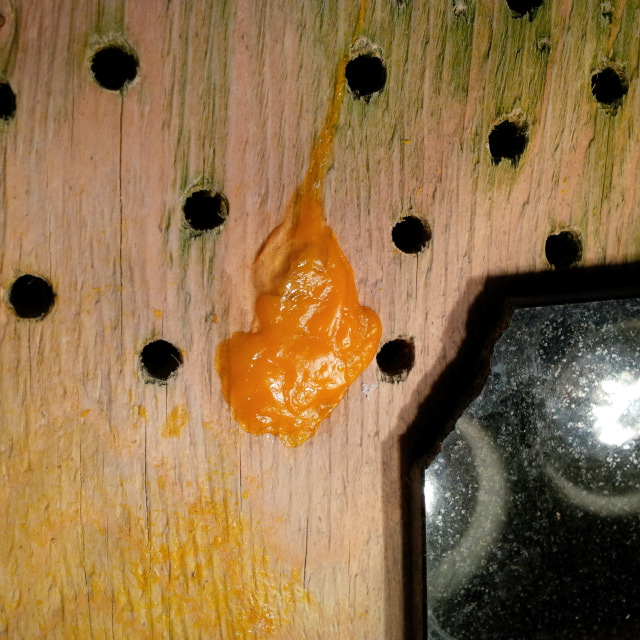 sick turtle?
Questioncloseup
further
QUESTION: Hi,
I
sick turtle?
Questioncloseup
further
QUESTION: Hi,
I
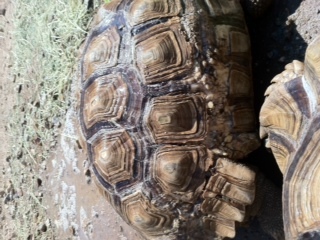 Sulcata tortoise shell question
Question
Sulcata Shell
Hi. I have a female sulca
Sulcata tortoise shell question
Question
Sulcata Shell
Hi. I have a female sulca
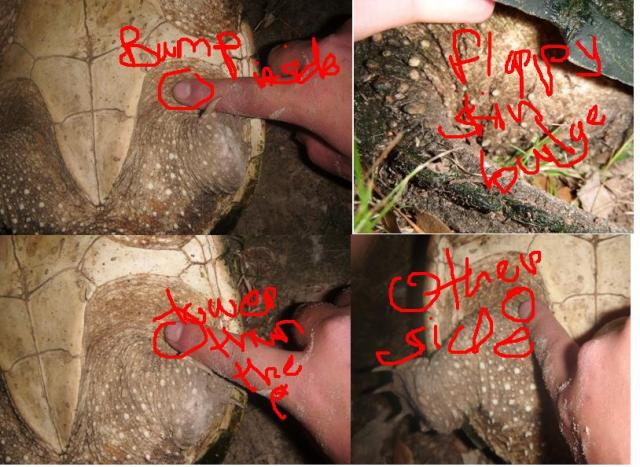 Eggs?
QuestionQUESTION: I have an 11 ft snapping turtle. I wa
Eggs?
QuestionQUESTION: I have an 11 ft snapping turtle. I wa
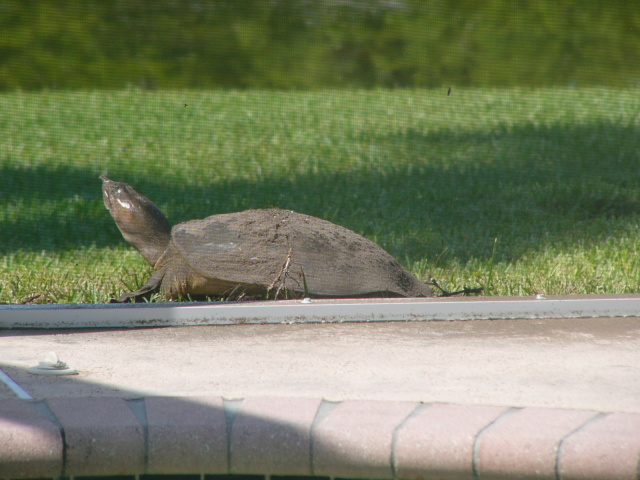 Softshell turtle nest
Question
Softshell nesting
Hi,
Just an hour ago, I have
Softshell turtle nest
Question
Softshell nesting
Hi,
Just an hour ago, I have
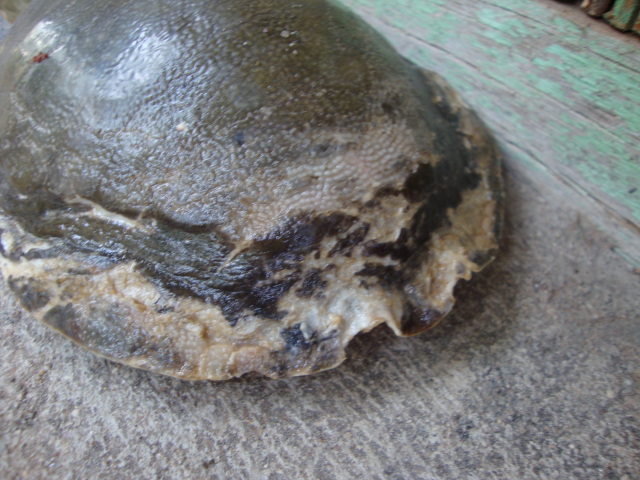 about the health of my tortoise
Question
tortoise shell
hi iam sasikiran.actualy
about the health of my tortoise
Question
tortoise shell
hi iam sasikiran.actualy